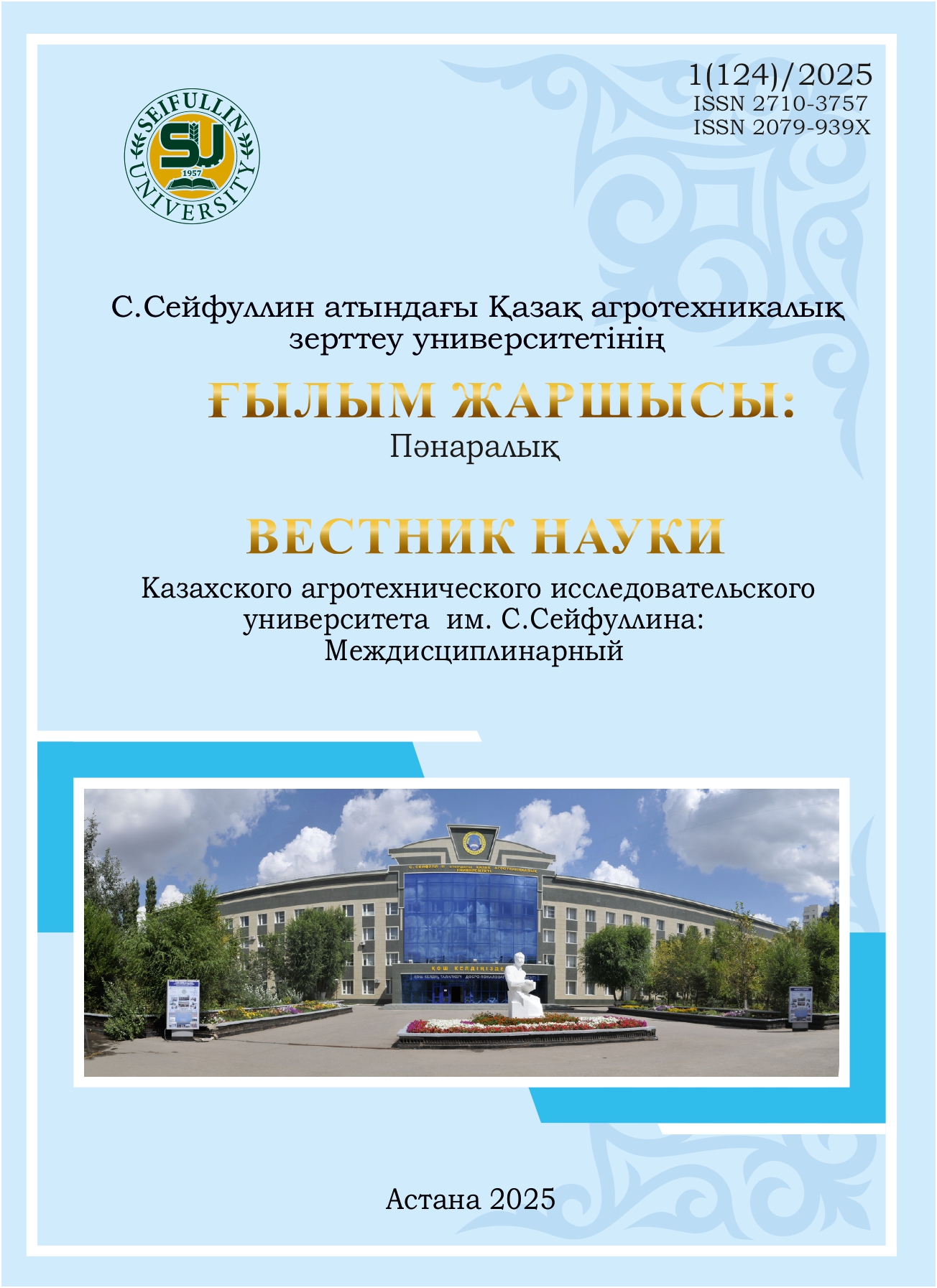The effect of an additive in the feeding diet of pregnant dry cows with mineral and vitamin top dressing
DOI:
https://doi.org/10.51452/kazatu.2025.1(124).1806Keywords:
pregnant cow; feeding rations; dry period; zeolite; premix.Abstract
Background and Aim. To ensure the successful progression of pregnancy inproductively inseminated cows, support intensive fetal development, and obtain a full-fledged, viable calf, the nutritional value of the feeding diet of pregnant cowsmust be enhanced. In our experiments, for this purpose,we tested the enrichment of the diets of pregnant cows during the dry period with a zeolite-chlorella premix, consisting of 28-30% aluminosillicate zeolites, 1.5 2% Chlorella vulgaris powder, and 68-70% sunflower cake.
Materials and Methods. Pregnant Simmental cows were selected for the research using a scientific and economic experimental design based on the paired-analogue method. To increase the mineral and vitamin nutritional value of the feeding rations of pregnant cows during the dry period, a zeolitechlorella premix was added to the feeding ration of cows in the experimental groups. The research results obtained during the experiment were statistically processed using biometric methods.
Results. The enrichment of the feeding ration of pregnant cows in the experimental group during the dry period enhanced the mineral and vitamin nutritional value of the diet and positively effected pregnancy progression and fetal development. Compared to cows in the control group, the gestation period in the experimental group was reduced by 4.0± 0.6 days, and live weight gain increased by 12.3± 0.6 kg. This accelerated fetal development , increasing the live birth weight of calves to 42.0± 1.7 kg, which accounted for 7.45% of the mothers' live weight of,whereas in the control group, calves’ live weight was 38.9± 1.8 kg , making up 6.89% of the mothers’ live weight. Futhermore, cows in the experimental group gained 11.7% of their live weight during the dry period compared to 9.3% in the control group. Their body condition score increased from an average of 3.18 to 3.30 points, which contributed to improved fetal development and replenished the body's nutrient reserves.
Conclusion. Maintaining the optimal body condition of pregnant cows during the dry period allows for intensive fetal development and replenishing the body's nutrient reserves, which enhances milk production during the subsequent lactation. The inclusion zeolite-chlorella premix (ZCP) in the diet led to an increased live weight gain during the dry period, with calves’ live weight accounting for 10 12% of the mothers’ live weight, compared to the standard 7-9%.

